
In Friday’s article, How a property shortgage can turn to surplus, I noted how a perceived housing shortage in the US in the lead-up to the Global Financial Crisis (GFC) quickly switched into a surplus as the deteriorating economic conditions caused household formation rates to slump to 65-year lows in the three years following the GFC driven by a jump in the proportion of the population living in group (shared) accomodation (see next chart).
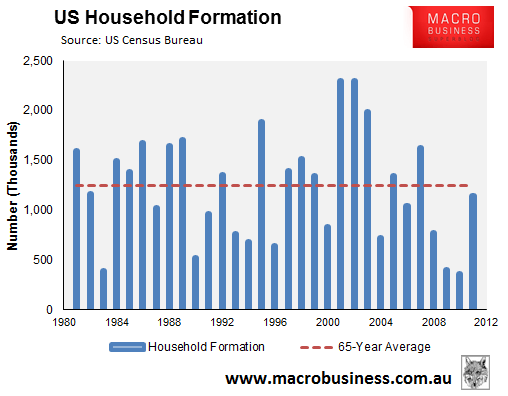
Now it appears that perceived housing shortages are emerging across the US on the back of a sharp lift in household formation rates in 2011 to near long-term average levels.
The below chart from Sober Look shows the situation differently by comparing the ratio of the number of US households against the size of the population. As you can see, the ratio bottomed in 2010 and has since recovered strongly:
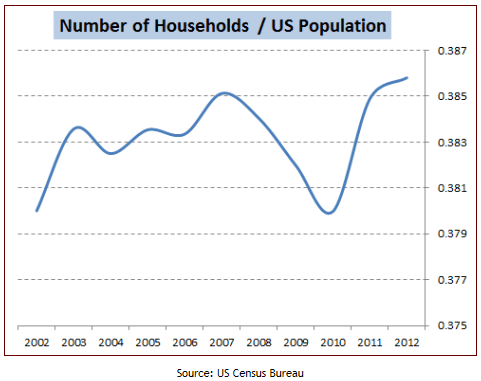
In a seperate article, Sober Look also notes that the number of homes available for sale as well as the housing supplies measured in months are now at pre-recession levels, with inventory now sitting at its lowest level since 1999 (see next chart).
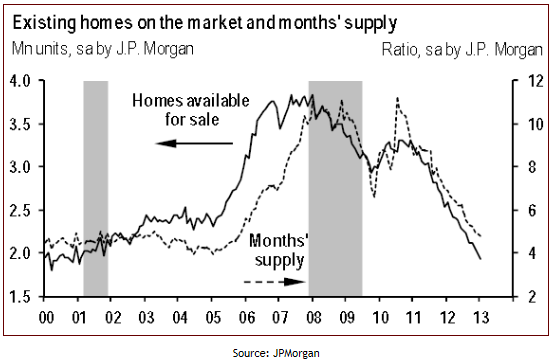
The rising rates of household formation in the US have also been met with sluggish new home construction which, despite showing signs of recovery recently, remains near historically depressed levels (see next charts).
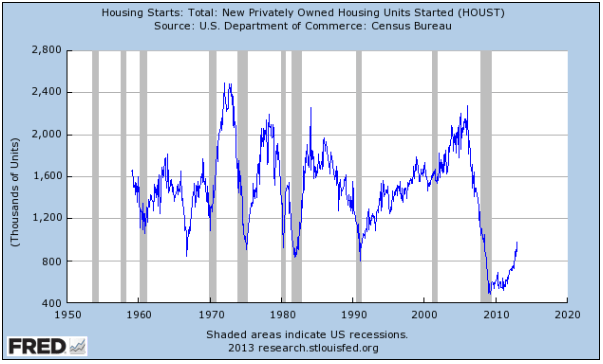
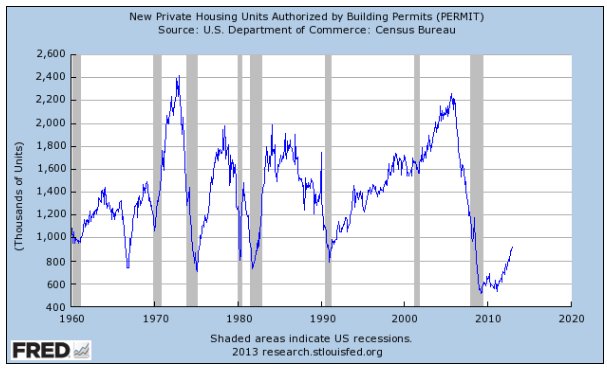
A couple of conclusions. The fact that US housing can swing so sharply from shortage to surplus and then back to shortage once again demonstrates the fungibility of housing demand and why perceived housing shortages aren’t necessarily a bullish indicator for house prices.
When economic conditions deteriorate significantly, the number of people opting for group accommodation (or the number of young people moving back into mum and dad’s) tends to rise significantly, which can turn a perceived housing shortage into a surplus.
Then the reverse is possible when economic conditions stabilise. Arguments based on underlying demand being a one-way bet for house prices are overly simplistic.

